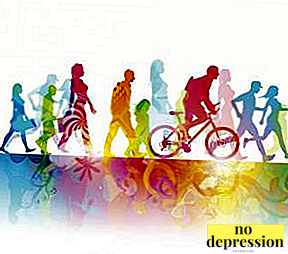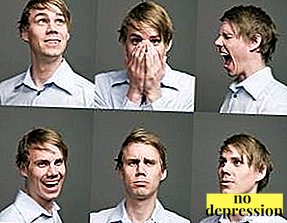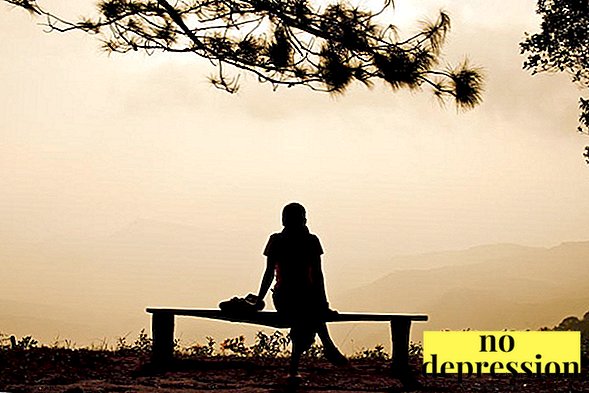Modern life impossible outside of society.
Cooperating with society as a whole and with its individual links in particular, we ensure our life, satisfy the need for communication, personal development and self-realization.
So what is the essence human social activity, and what laws does it obey?
Concept

What is social activity?
In its general sense activity - this is any action aimed at changing the surrounding world, both material and spiritual.
Object of activity Any object, process or idea can serve, and the result is the transformation of this object or the creation of new objects.
For example, a professional activity in any craft is the creation of an integral object from a group of materials using the tools, tools and knowledge possessed by the master.
The concept of social activity is somewhat deeper. It takes into account the relationship of this process with society, indicates the importance of human activity in the system of principles and values of a certain group of people.
Allocate such social goals:
- satisfaction of vital needs of a person, obtaining material or ideal (non-material) values;
- building a subjective image of the surrounding reality, stimulating thinking;
- transformation of reality within the framework of the whole society or its separate group;
- psychological development and self-realization of man.

Ultimately, for each mentality, character and way of thinking, one of the goals becomes the main, and the rest only complement it.
However, these goals are closely interrelated - eliminating one of the common system, a person destroys the rest.
His actions take destructive character, the result of which is the cessation of development or the degradation of thinking, abilities and skills.
For example, artists, deprived of the opportunity to creatively develop, experience difficult inner experiences, apathy and lack of strength, which prevents them from achieving other social goals.
Manifestations
What are its manifestations? After analyzing the above, we can conclude that activity is, first of all, a change, a transformation. Any social activity is based on four components.:
- human attitude to the totality of the surrounding objects of the material world;
- the attitude of a person to other people, a group and society as a whole;
- attitude to events and phenomena;
- attitude to yourself.

Despite the fact that any change occurs simultaneously in the whole complex of these components, the degree of its influence is not the same.
Thus, activity directed at a material object is called an action, and directed at a person, group or society — an act.
Internal changes - the subject of philosophy and psychology, they are expressed in the thoughts and feelings of a particular person.
And only events and phenomena that play the role of an external factor cannot be influenced by a person.
Structure and components
Independent sources cite various theories about the structure of social activity, but they all agree on one thing: This structure is based on two fundamental criteria: practical and spiritual.
They complement and stimulate each other, determine the components of any human activity. Usually, the role of these components play:
- Motive. The primary motive of any activity of living beings is the preservation, maintenance and reproduction of life. With the development of human thinking and self-awareness, deeper motives appeared - self-expression, self-realization, social significance.
- purpose. It represents a concrete image, a mental model of the desired result, on the achievement of which human activity is directed. According to the significance of specific actions and actions for a society, goals are conventionally divided into constructive and destructive, the role of their quality indicator is played by the so-called value meaning.
- Productivity. It takes into account all the means involved by man to achieve the goal. The productivity stage comes to the end with result which can correspond or not correspond to an object in view. In the second case, the activity is often cyclical.

It is noteworthy that these components of activity were formed at the dawn of civilization, in many respects they became the catalyst for the processes of creation and development of society.
Everything social transformationthat have taken place in the history of mankind are based on motives, goals, and productivity.
Types and forms

The concepts of types and forms of social activity are not synonymous.
View indicates the nature of the relationship between man and the object of activity, and the form concretizes this character, taking into account the method of achieving the goals set.
As a rule, allocate six main types of social activity:
- material and conversion - aimed at the creation of objects of labor as the necessary benefits of the material world;
- scientific and educational - consists in conducting research and experiments, creating concepts, theories and models, developing and concretizing means or methods of labor and knowledge;
- artistic and aesthetic - satisfies the spiritual needs of both the subject of activity and other people;
- value - leads to changes in the existing system of moral, social, political and other values;
- communicative - reflected in the interaction of man with individuals and society, the exchange of culture and worldviews, the modernization of society;
- health care - aims to preserve and maintain the life and health of people.
If the boundaries between types of social activity are strictly defined, then its forms have neither an exact amount nor pronounced external restrictions.
One form or another becomes a derivative of the experience of generations; it has specific features determined by the conditions of its formation in each specific social group. The most typical forms of social activity are:
- Cognitive-labor. Reflects the willingness and ability of a person to accumulate professional knowledge in their field of activity, to improve the skills and abilities for carrying out material-transformative or scientific-cognitive activity. This form of social activity satisfies not only material needs, but also the need for self-actualization.
- Self-educative and self-educative. They serve as a projection of personal motivation in satisfying intellectual needs. Often, the impetus for such activity becomes the involvement of a person in social life, its interaction with society.
- Contact. It is explained by the desire of a person to belong to a certain social group, to communicate and interact with others. It is decisive in the areas of activity based on a team approach to solving problems and achieving goals.
The contact form of activity develops the person’s communication skills, stimulates cognitive-labor activity, self-education and self-education.
- Educational and educational. Satisfies an individual's need for information or his desire to share knowledge and experience gained with others. It includes a complex system of communicative interactions, including educational institutions, libraries and databases, and the media.
- Socio-cultural. It has much in common with the contact form of activity, but takes into account another criterion for the formation of social groups - cultural and historical. Such activity is built on an array of moral values, norms of behavior, laws and rules. A striking example of socio-cultural activities are youth subcultures.
- Social and organizational. Based on common interests and needs, and in a more global sense - common origin, territorial and cultural proximity of people. The most significant component of social and organizational activity is civic activity, which is a way of self-realization of an individual as a full-fledged member of civil society, a participant in political and social life, who has his own outlook and defends certain social institutions.


In an ideal society, each person harmoniously combines all forms of social activity, contributing not only to personal development, but also the development of society as a whole.
In practice, this situation rarely meetsmost often, a person concentrates on one or several forms, and the rest are developed only to the extent sufficient for the realization of the main goal of social activity.
Levels and criteria

There is not and cannot be a single system for assessing social activity, its importance in the field of interpersonal and social relationships.
However, we can to assess the role of the result of the activities of individuals and the degree of its significance for others at one or another stage of the development of society.
So, any result can be:
- creative, that is, reproductive, innovative, aimed at creating a new or improving the known;
- conservative, that is, not of special value for the contingent on which it can affect, but also does not have a destructive impact;
- destructive, that is, negatively affecting the material world and / or the system of norms, values, principles and rules that exist in a social group.
The conservative result is more theoretical than practical, because, one way or another, any activity leads to changes. And what they will be determines the significance of motives and goals, as well as the choice of ways to achieve them.
Social experience
Any active interaction in the social environment leads to the formation of a specific experience. In interpersonal relationships, it manifests itself in the form of sympathy or antipathy, when interacting with a social group, experience is reflected in the acquired position of a person and the nature of his communications.
Social experience reflected in the mindset of the individual, participates in the formation of his worldview, attitudes to those or other processes, phenomena, actions and actions. There are such components of social experience:
- knowledge - received information about the world, current problems and ways to solve them;
- practice activities - skills that take into account accepted norms, rules, intellectual features in a particular niche;
- creative practice - ability to self-realization, creative approach as a result of self-educational and self-educational social activity;
- practice of feelings - emotional-value perception of the stage of productivity and result.

Contrary to popular belief, social experience - this is not the sum of the information received, but the result of its analysis and conversion. It drives the progress of social relationships, as it leads to the modernization of social activity, the transformation of forms of activity and human communication.
Activity is not an innate, but an acquired property. The ability to it is developed in the process of personal development, and the character is determined by the internal qualities of a person and the influence of the external environment.
Therefore, to ensure the full constructive activities of all members of society important commonality of their value system, a healthy psychological, intellectual and emotional environment within individual groups.
What is social activity and why is it important:



